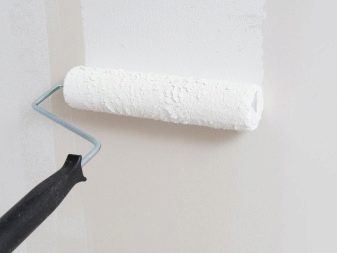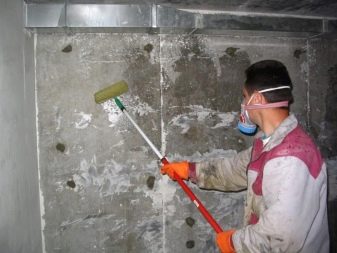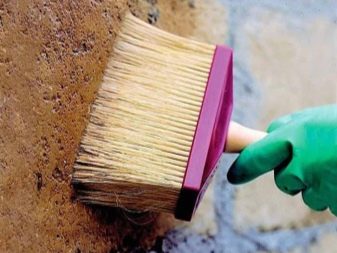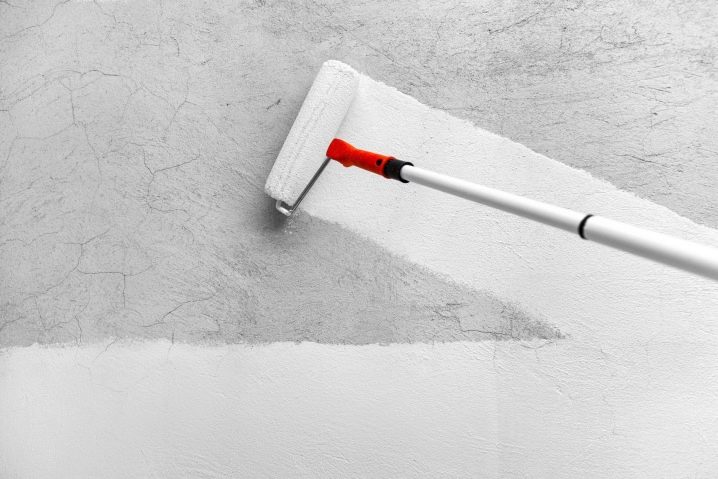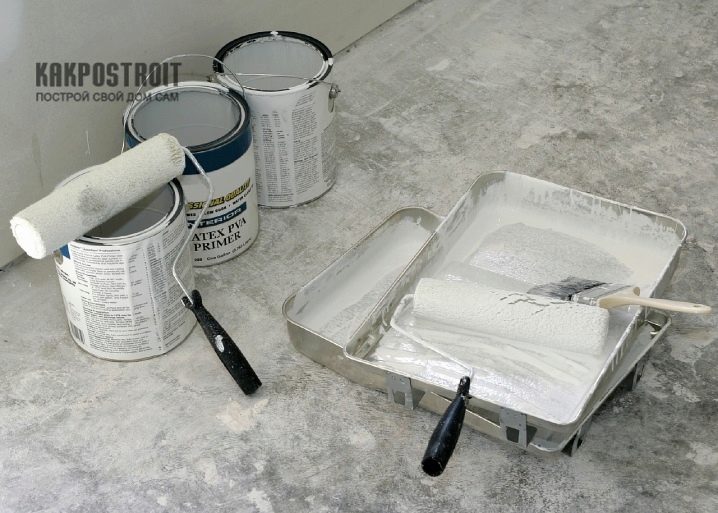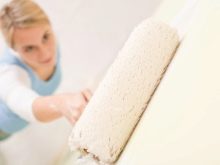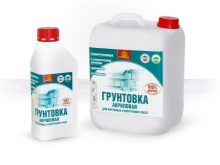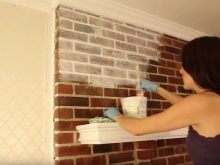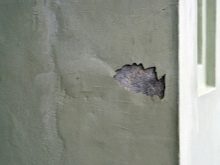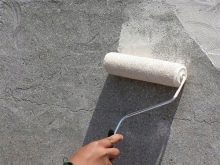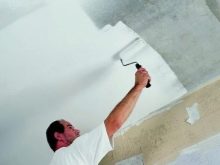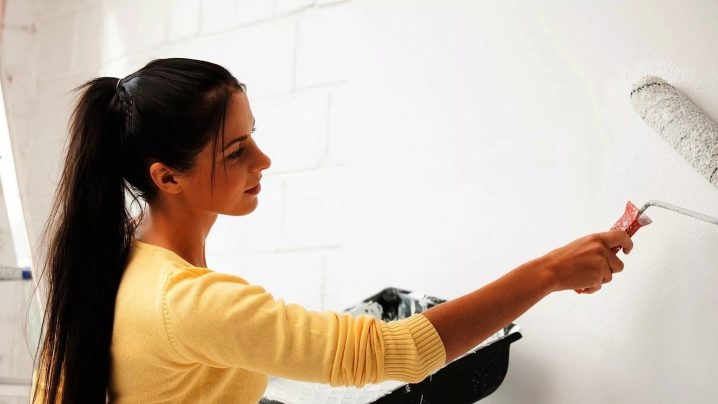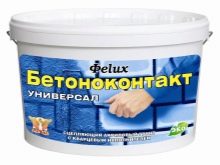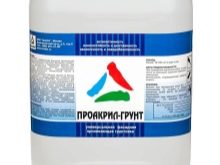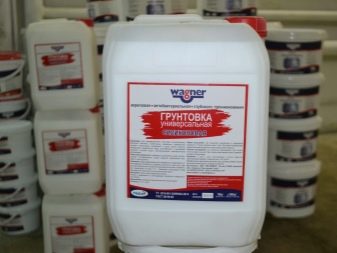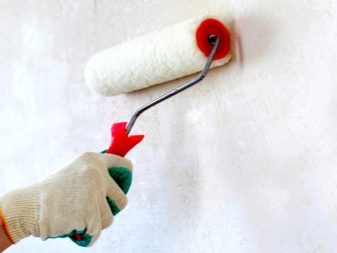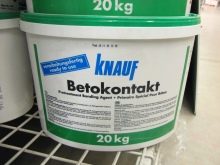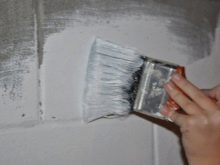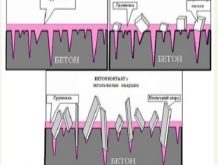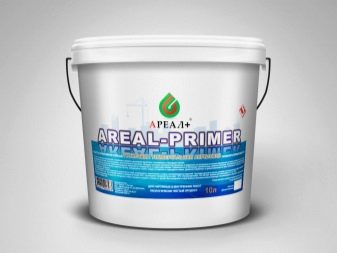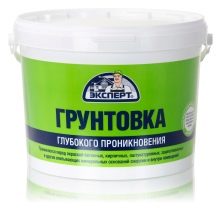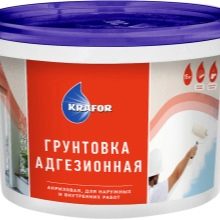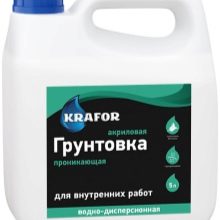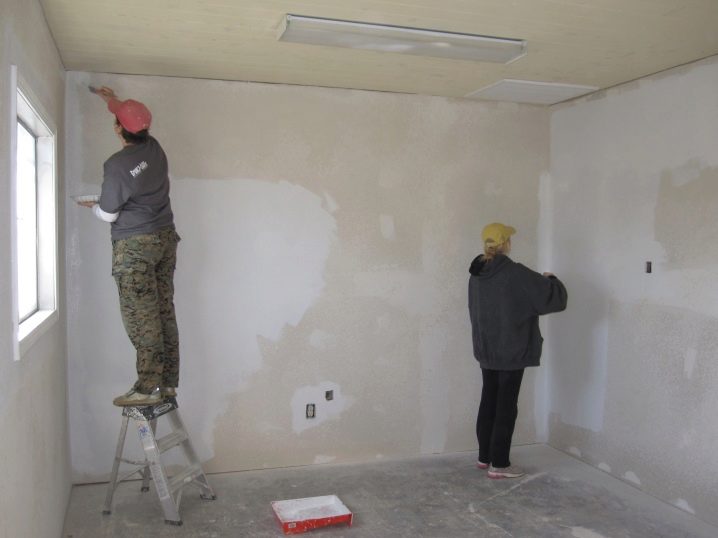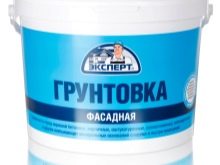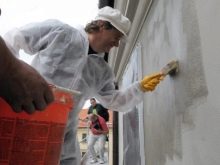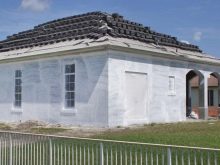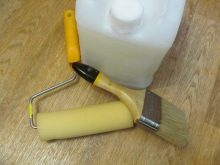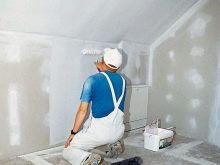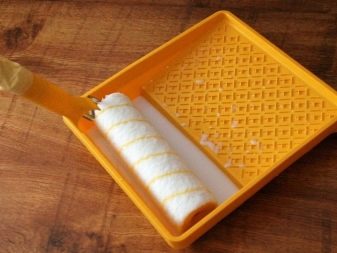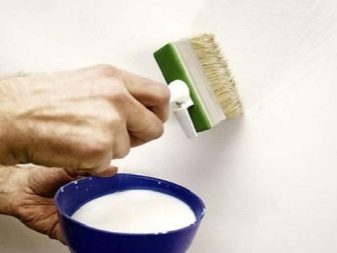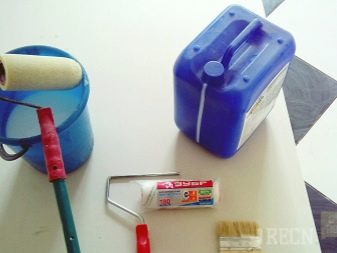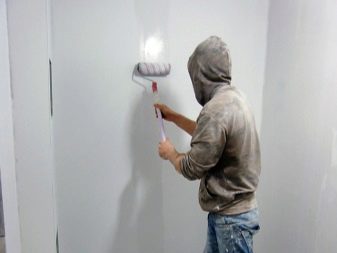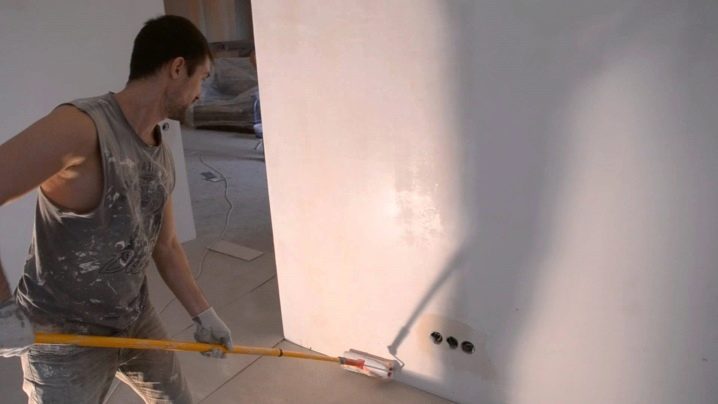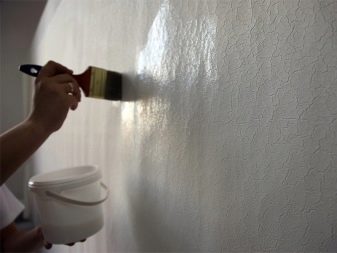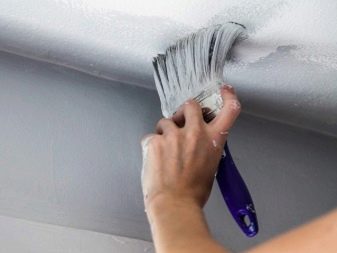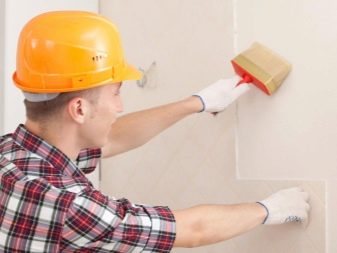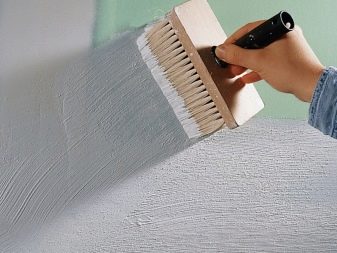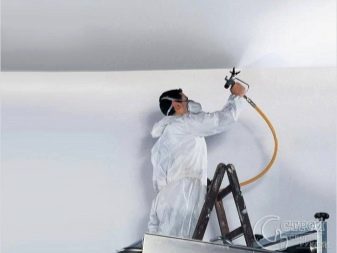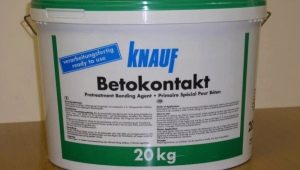What is the need to primer the walls before plaster?
Priming of walls is one of the mandatory working moments when performing finishing work. Let's try to understand how justified the use of primers, is it necessary. Consider the types of soil, its properties and subtleties of choice.
Do I need to primed?
The plaster used to finish the walls, during operation, is characterized by cracking and peeling properties from the working surface. This problem can be solved by correctly selecting the components and providing the coatings with the necessary drying conditions. However, the degree of adhesion depends on the preliminary preparation of the base. An interesting nuance is the formation of a crystalline micro-lattice during the drying of the primer composition. It is due to it that the adhesion of the base and the means used for plastering are increased.
It may seem to an unenlightened person that the application of a primer is nothing more than an advertising course of trademarks. In fact, with the advent of such compositions on the construction market, it was possible to significantly increase the quality of the finished surfaces. Regardless of the type of plaster and its additional inclusions, by itself it will not give such a result as when used with a primer. The finishing mixtures themselves also change: sometimes trademarks offer entire lines for the highest quality finishing work.
Often in the list of one company includes draft, primer and finishing compositions provided for the most high-quality finish walls (ceiling).
What is it?
The primer is a material on a different basis, which can be liquid (ready mix) or powder (involving dilution). In the finished form, the composition is viscous and resembles milk. Depending on the variety, it may have a different shade or be colorless. For the rough finish using a transparent composition. Some species are characterized by grayish and pinkish hues.
If you want to put decorative plaster, apply a mixture of white.
So the color of the finishing will not be distorted, and it’s better to see where there is already a layer of soil. The material is sold in bags and plastic buckets. The volume of soil is different and depends on the amount of planned work. The composition in the form of powder is easier to store, when it is used reduced overruns.
What is it for?
Primer for walls is an element of the preliminary preparation of the base. It is used to hold the plaster on the ground as long as possible. Penetrating into the structure of the walls, it binds dust and microcracks. Depending on its type, it can make a homogeneous structure of porous walls erected in violation of technology.
This is especially important since sand is constantly sprinkled from such walls. Therefore, applying plaster on them can be problematic. Usually it does not hold on such a basis for more than a few years. Often, peeling occurs within the first year from the date of finishing work. In some varieties, the primer can penetrate into the base structure up to several cm.
In addition to strengthening the treated surfaces, they relieve metal bases from corrosion.
Types of primers
It is no coincidence that in the modern construction market, the primer is represented in a wide range. This is not a single composition, differing solely by the name of the manufacturer. In fact, each type of primer for processing walls before plaster is different in properties and penetrating ability. The composition may include different components, so the degree of impact on the base they are different. Consider the main types of primer compositions.
For interior work
The category includes primers for indoor use. However, they often do not have a specific smell. There are three types of such compositions:
- universal;
- concrete contact;
- acrylic.
Consider the features of each primer.
Universal
This primer is designed for surfaces of different types. It does not have a narrow focus, so its effect will not be as pronounced as, for example, in a variety for porous bases. However, the level of adhesion after applying this composition is sufficient for a high-quality finish. It is not recommended to use this compound on wood or metal bases. The composition may have a resin flavor.
This is one of the most common types of primer used before plastering. It especially strengthens the upper layer of the base.
Concrete Contact
This primer is interesting in the presence of quartz sand. Due to this, after drying, the surface becomes rough to the touch. This composition is used on the bases with old paint, on concrete or even tile. Since the old coating does not contribute to sufficient adhesion due to its evenness and smoothness, the task of the soil is to create the necessary basis for which the plaster will cling. It is intended for weakly absorbing walls. It is a suspension of the smallest grains of sand in a sticky mass of pinkish hue. Formed on the surface of the lattice like sandpaper, it is quite rough.
Acrylic
This primer has a great penetrating ability. It penetrates as deeply as possible into the structure of the base (up to 100 mm), which is especially good for loose walls. The composition is sold in the form of a mixture and powder, which is diluted at room temperature to the desired consistency.The breeding ratio of the manufacturer indicates the labeling of the goods.
This primer is considered one of the best among other varieties. It is often used on surfaces with low water absorption. Acrylic primers are divided into several varieties. Depending on the type of surface being treated, they can be:
- deep penetration;
- adhesive;
- impregnating;
- special.
Each species has its own characteristics and properties. For example, the impregnating variety is applicable where the base differs by different absorbing force on different parts of the surface. Its use allows you to even the rate of absorption, which is important for the subsequent application of plaster. No less remarkable is the specialized composition capable of exterminating parasites.
Adhesive mixtures increase the adhesion force between the substrate and the finish.
For external works
To work outside use organ-soluble compounds. These are primers resistant to atmospheric phenomena, increased pollution, the effects of parasites and bacteria. They differ from the mixtures used indoors.This can also be attributed to acrylic primer for outdoor work. Compositions for external works are composed of antiseptics and fungicides, as well as water repellents.
They are not afraid of the radiation of the sun, the temperature drop. These are deeply penetrating, textured, antiseptic and insulating primer compounds. They are used for poor adhesion, under the plaster and after its application, if it began to peel off or become covered with cracks.
According to the type of base, the compositions are selected for smooth, cellular bases and concrete contact.
Properties
Depending on the type of material, its properties are different. The main task is to strengthen the foundations. At the same time, it perfectly prepares the base for plaster, for example, aerated concrete, concrete, brick, foam plastic, wood and plaster surface, as well as expanded clay and cement. Thanks to it, it is possible to apply decorative plaster at a professional level.
The composition of the primer is film-forming components, resins and fillers. In most varieties, it can be colored. This property allows you to see where the surface has already been machined. This criterion is important: the crystal lattice film must be uniform.Mineral blends contain cement, gypsum and lime. Primer:
- eliminates the possibility of penetration to the base of excess moisture;
- is an antibacterial composition (does not allow the development of mold, fungus);
- masks the base, leveling its color, enhancing strength;
- depending on the composition, it slightly levels the walls;
- helps to increase fire resistance;
- hides spots on the processed surface.
In addition, the use of soil can reduce the amount of plaster material.
Absorption of the walls is also important: after processing it with a primer, the plaster mass will not be absorbed with double strength. This will allow you to make any decorative pattern, if it is designed by design. It is also easier to work with plaster on the primed surface: it lays down smoothly, which reduces the time for finishing works.
How to choose?
As it is difficult to study thoroughly information about primers in the store, learn a few nuances of choice.
- In a dry place on a metal surface, it is advisable to use a glyphthalic primer. She dries day.
- Perchlorvinyl primer can only be used for exterior applications.It is toxic, suitable for all surfaces, dries in 1 hour.
- Polyvinyl acetate variety for the purchase of plaster is not suitable. This is a variation for subsequent painting.
- Phenolic primer is not suitable for surface treatment indoors. It is good for facades, dries in 14 hours.
- Synthetic polystyrene variety is suitable for coating of surfaces from solid wood and plastered bases. It is extremely toxic.
- The best option for working indoors is an alkyd primer. It dries in 10 - 12 hours, can be used to prepare the ceiling for decorative plaster.
- Acrylic is applicable for concrete and brick foundations, foam blocks, and it can also be a gas block, wood, chipboard. When working with a metal surface can cause rust.
In addition, see the expiration date: if it is close to the end, taking the material is undesirable. However, if the volume is small and repairs are planned immediately, you can buy the soil. After the expiration date, the qualitative and operational characteristics of the soil change. Experts recommend choosing for plastering immediately a set of tools from one manufacturer.
Application Methods
Depending on the type of foundation and the amount of work performed, the tools used to apply the primer may differ. Someone easier to use roller, maklovitsy, others like the brush. It is better to use a paint roller and a flat brush for surface preparation. Before applying the composition, it is poured into a special container. Then take a roller, impregnate with a primer composition, squeeze a little and spread over the surface.
It is important that the liquid does not flow from the roller: so the material consumption will be unjustified (the liquid will flow along the walls to the floor, which is absolutely not necessary).
The brush is used in the joints of the walls with the ceiling, as well as in the corners, allowing you to maximally fill the surface with the composition. The brush will allow you to perform this work as accurately and accurately as possible. To prepare the surface for plaster on the street it is not needed.
However, not everything is so simple: initially it is necessary to prepare the foundation. To do this, remove the bumps on the surface, mask the potholes, chips, cover up the cracks.This will reduce the consumption of plaster. Usually for this use putty. Everything that crumbles is removed. Soil is applied, dividing the wall into 2 parts: top and bottom. First process the upper part of the plane.
The primer is applied in two layers. It is impossible to put the second until the first one dries. This is especially important in order not to break the lattice that is not fully formed. If the base is too smooth, or when preparing foam plastic, fiberglass mesh is sometimes used before applying the primer. Its density should not be large, otherwise it may complicate priming.
Useful recommendations
Arm yourself with the useful recommendations of professional craftsmen: this will help to achieve the highest quality results when carrying out finishing work. Plastered surfaces will be reliable and durable if the material is properly selected:
- When buying, choose water-soluble formulations. They differ in breathable texture and do not accumulate moisture.
- If there are solvents in the composition, they are not suitable for processing foam.
- Before applying the primer, it is important not only to clean the base, but also to wipe it off with a damp cloth from dust.Otherwise it will be on the surface, which will affect the color of the base.
- It is necessary to dilute the primer in strict proportions. Do not break the texture: it will affect the consumption and absorbency of the walls.
- The layer of application of the composition should not be dense. It is important to maintain uniformity throughout the treated plane.
- It is possible to put a primer only on the dry basis.
- The most hard-to-reach places can be sprayed.
- If the plane to be processed consists of several materials of different composition, use a universal soil or separate compositions (if available).
- Do work in protective glasses and gloves. In case of contact with the skin, wash it immediately, otherwise it will be difficult to remove it.
- If the soil has a smell, buy a respirator. Special clothing is desirable: stains will remain on it.
- At the end of the work immediately wash the roller and brush. If the primer is dry, you will have to change the coat of the roller, and throw out the brush.
In the video below you can see in detail how to primer the walls before plastering.

